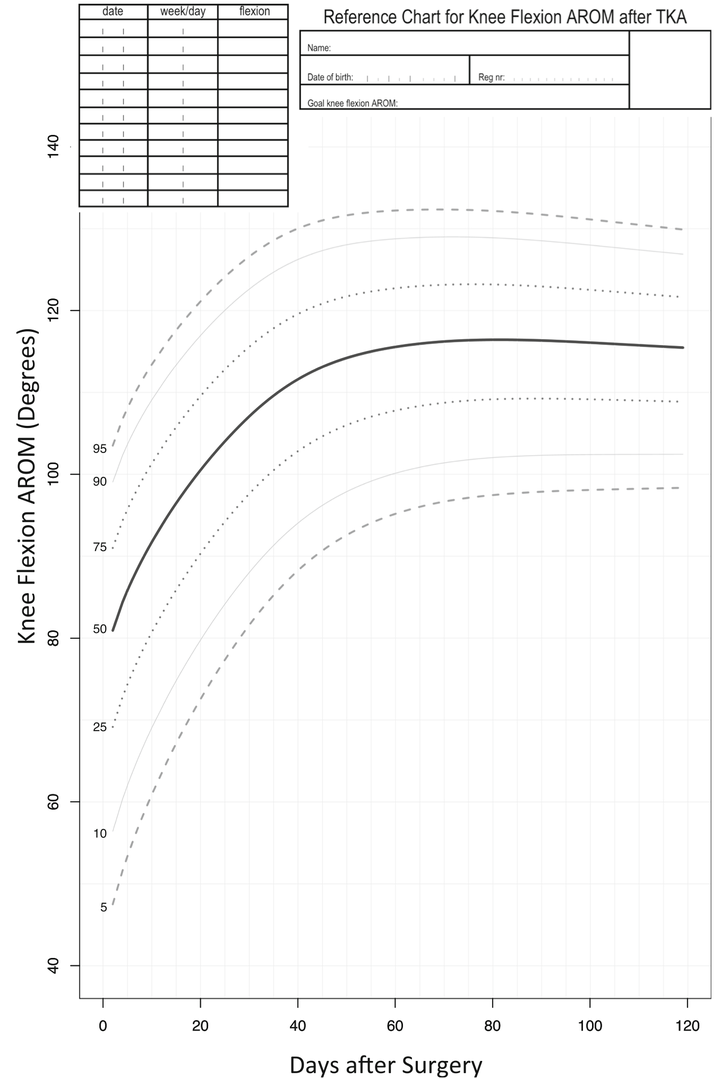Reference chart for knee flexion following total knee arthroplasty: A novel tool for monitoring postoperative recovery.

Abstract
BACKGROUND: Clinicians and patients lack an evidence-based framework by which to judge individual-level recovery following total knee arthroplasty (TKA) surgery, thus impeding personalized treatment approaches for this elective surgery. Our study aimed to develop and validate a reference chart for monitoring recovery of knee flexion following TKA surgery. METHODS: Retrospective analysis of data collected in routine rehabilitation practice for patients following TKA surgery. Reference charts were constructed using Generalized Additive Models for Location Scale and Shape. Various models were compared using the Schwarz Bayesian Criterion, Mean Squared Error in 5-fold cross validation, and centile coverage (i.e. the percent of observed data represented below specified centiles). The performance of the reference chart was then validated against a test set of patients with later surgical dates, by examining the centile coverage and average bias (i.e. difference between observed and predicted values) in the test dataset. RESULTS: A total of 1173 observations from 327 patients were used to develop a reference chart for knee flexion over the first 120 days following TKA. The best fitting model utilized a non-linear time trend, with smoothing splines for median and variance parameters. Additionally, optimization of the number of knots in smoothing splines and power transformation of time improved model fit. The reference chart performed adequately in a test set of 171 patients (377 observations), with accurate centile coverage and minimal average bias (<3 degrees). CONCLUSION: A reference chart developed with clinically collected data offers a new approach to monitoring knee flexion following TKA.